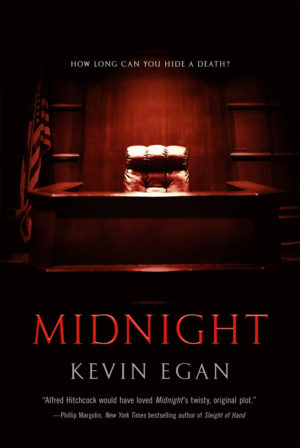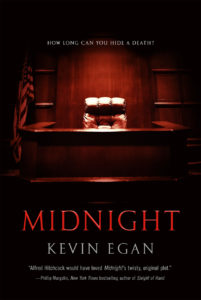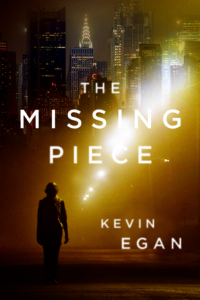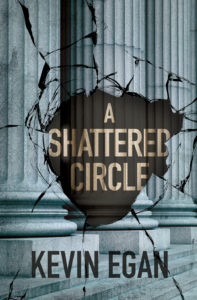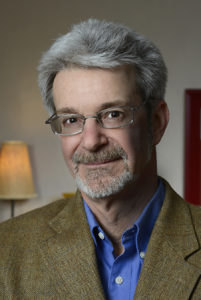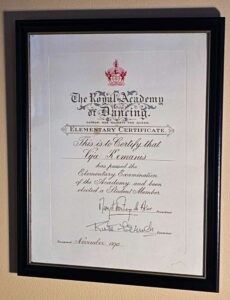
My Royal Academy of Dancing certificates, faded and stained, hang on the wall near my computer desk. I see them every day, but like so many things in the home environment, they fade into the background and go unnoticed. Today I focused on them with feelings of gratitude—and curiosity.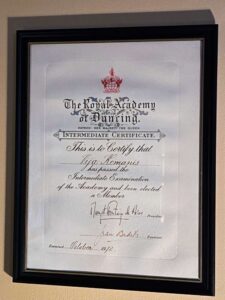
The gratitude: For my parents
With seven children and very little money, they still found a way to give me ballet training. They knew how much I loved it. I lived for dance class, twice a week as I remember, plus rehearsals. Professional-level training should be daily, but that was something well outside the family budget. As a teen, with my own income, I added classes and somehow made it to a performing artist. Ballet, and later, jazz and contemporary styles.
Dance has stayed with me for more than 60 years and now I dance daily, either taking or teaching class. No other form of exercise includes all this: full-body strengthening, flexibility, stamina, and coordination; musicality, mathematical precision, and artistry; mental acuity and memory improvement; organization and discipline. Surrounded by other dancers in the studio, you absorb their energy and gain inspiration. You walk out of there feeling happy the rest of the day. An endorphin high.
Okay, you get it. I’m grateful.
The curiosity: Who were my RAD examiners?
My RAD certificates are signed by my examiners: Ruth French and Jean Bedells. I was a teenager when I took those exams. Like most teenagers, I lived in blissful ignorance of the backgrounds and daily lives of my teachers and elders. I knew next to nothing about the RAD examiners.
All I knew was this. The studio I attended in Oakland California was an affiliate of the Royal Academy of Dancing in England, whose president, Dame Margot Fonteyn (1919-1991), was the prima ballerina in a storied partnership with Rudolf Nureyev (1938-1993). In 1962, when Fonteyn considered retiring from the stage, she reluctantly agreed to dance with the Russian defector, who was 19 years her junior.
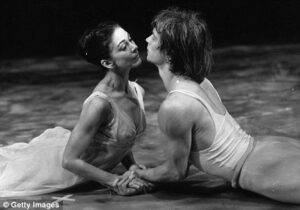
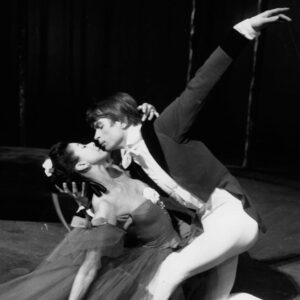
As it turned out, their unlikely partnership was magical and lasted for decades. Nureyev once said of Fonteyn that they danced with “one body, one soul”. Their last performance together was “Baroque Pas de Trois” in September 1988 when Fonteyn was 69 and Nureyev was 50; they danced with Carla Fracci, then 52.
Click here for a video of Fonteyn and Nureyev dancing the Swan Lake pas de deux on the Ed Sullivan show in 1965. Fonteyn was 46 years old. Gorgeous.
I digress. Back to my exams.
My training in classical ballet followed the RAD syllabus. Every two years, RAD examiners traveled from London to our studio in California. As I recall, a few students took the exam together. We wore a regulation outfit: black leotard and pink tights with a particular kind of skirt and headband. The examiner sat at the front of the studio and gave us the exercises and dance combinations using the French terms. What’s the difference between a “pas de bourrée dessus” and a “pas de bourrée dessous”? The words sound almost the same, but you’d better know which one the examiner wants you to do. Nowadays, when I teach, I call them “pas de bourrée over” and “pas de bourrée under.” So much easier.
In my recent search for information about my examiners, I couldn’t seem to find the “Royal Academy of Dancing.” Isn’t that the organization on my certificates? Mystery solved when I learned that the name changed to “Royal Academy of Dance” in 1999. Does “dancing” sound too pedestrian? Better to say “the dance,” pronounced like “the sconce.”
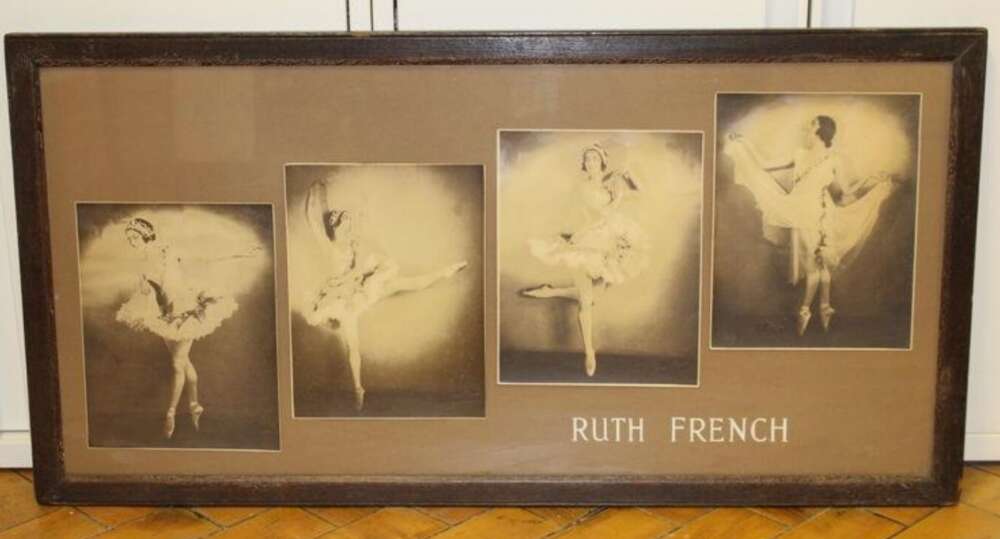
My elementary examiner was Ruth French (1903-1986). It was 1970, I was 16, and the lady from England seemed ancient. In fact, French was a year younger than I am now—and, of course, as you surely will say, I’m not ancient, or even very old (!)
French danced before the so-called birth of British Ballet, so she had to develop her own career. When touring, she advertised with her own publicity boards—like the one pictured above. She twice appeared in Royal Command performances and danced with Anna Pavlova in the 1920s. In a 1935 production of Swan Lake, young Margot Fonteyn and Ruth French were co-stars, Fonteyn dancing Odette (the white swan), and French dancing Odile (the black swan). French later became a respected teacher and an examiner for the RAD. In 1973, she received the Queen Elizabeth II Coronation Award.
 My intermediate level examiner was Jean Bedells (1924-2014), daughter of Phyllis Bedells (1893-1985), who was a founding member of the RAD in 1920 and helped develop its first syllabus. Jean Bedells performed with Sadler’s Wells Ballet, the precursor to the Royal Ballet.
My intermediate level examiner was Jean Bedells (1924-2014), daughter of Phyllis Bedells (1893-1985), who was a founding member of the RAD in 1920 and helped develop its first syllabus. Jean Bedells performed with Sadler’s Wells Ballet, the precursor to the Royal Ballet.
Here is a photo of her as a teenager in 1938. A list of Bedells’ performances includes a 1942 performance of Coppélia in which she danced the part of one of Swanilda’s friends. Thirty years later, in 1972, I danced that role in the RAD company I performed with in the East Bay Area, Dancer’s Theatre.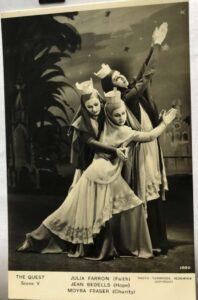
Here is another photo of Bedells from a performance of “The Quest” in 1943. Not sure, but I think she’s the one in the middle.
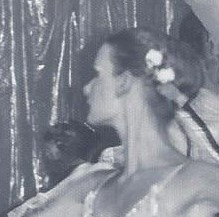
In performance, 1973, when I had enough hair for a bun
I never took the RAD advanced level exam. I was training for it when I decided to switch studios. In 1973, I joined Carlos Carvajal’s Dance Spectrum in San Francisco.
This is me on stage in Carlos Carvajal’s “Iridis,” to Ravel’s “Le Tombeau de Couperin.” Beautiful music and choreography.
I’ve enjoyed this little trip down memory lane, along with everything I learned with a little extra research. Now for a….
Post Script
Here’s a bit of news about my other passion—fiction writing!
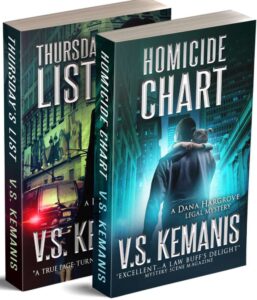 As many of you know, the sixth and final Dana Hargrove legal mystery, Power Blind, was published in January 2022. A few years ago, the first four novels
As many of you know, the sixth and final Dana Hargrove legal mystery, Power Blind, was published in January 2022. A few years ago, the first four novels were combined into two e-book double sets, making them available at a discount and free to Kindle Unlimited members. Now the third and final “Dana Hargrove Double” (novels 5 and 6) is on pre-order, to be released February 17.
were combined into two e-book double sets, making them available at a discount and free to Kindle Unlimited members. Now the third and final “Dana Hargrove Double” (novels 5 and 6) is on pre-order, to be released February 17.
Here’s the real news. During the preorder period, all three double sets are priced at just 99 cents (regularly $5.99). All six novels, for pennies. So, load up your Kindle before February 17 for rainy day reading to come!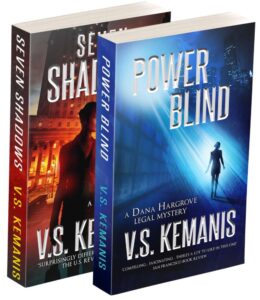
I’ve just finished writing a new novel (very different from the Dana Hargrove series), and I’m on a hunt for a literary agent. Wish me luck!
Ciao for now.

